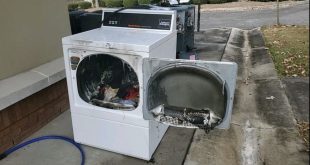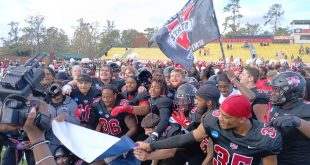You hear that sound? It’s the familiar ping of a metal bat striking a baseball perfectly for a home run or line-drive double in the gap.
TCU slugger Jason Coats is used to hearing it. Only this year, the sound has often been followed by a long flyout instead of a homer.
Coats, who led the Frogs’ in batting and RBIs in 2010, is a poster boy for college baseball’s season of change.
The NCAA established new bat standards that drastically reduce a batted ball’s exit speed. The result is a bat that performs more like a wooden one. And the numbers through the first half of the season make that glaringly obvious. Division I teams are batting 22 points less (.279 down from 301 in 2010) and shutouts have increased by 60.3 percent.
“There are no cheap home runs anymore,” said Coats, who hit his fifth Saturday. He had 13 in 2010. “It’s been a challenge because there are some balls you thought you got pretty well.” Although Coats thinks the new bats will lead to a better brand of baseball, others, like his coach, Jim Schlossnagle, are leery of the change.
“I don’t want to watch college baseball players play with a wood bat,” Schlossnagle said. “I think 20 percent of your crowd wants to see a 3-1 game. But I don’t think that’s why college baseball has grown the last 10, 12 years. They don’t want to see 21-14, but I think they want to see .. when you’re down 7-3, you’ve got a shot.” The NCAA hopes the limited offense that comes with the bats shortens games. There’s also a clock to limit pitchers to 20 seconds to release the ball when the bases are empty. Conversely, batters can be assessed a strike if they aren’t ready and in the box in the same time.
Lupton Stadium was one of the few parks to display a 20-second clock on the outfield wall, but TCU stopped using it several weeks into the season, and instead has relied on the third-base umpire to keep the time with a stopwatch.
“It’s definitely changed the game,” Texas Arlington coach Darin Thomas said. “I just hope they let it work itself out and don’t start switching back and forth. It is going to affect the way you recruit. I do think it needs to cycle down in two to three years into high school so those guys are swinging the same thing we are.” Thomas said pitchers are throwing more strikes and “aren’t backing off of contact.” He has also noticed better defense because players are able to field more balls since they aren’t traveling as fast off the bat. Plus the new bats last longer because they don’t dent as much.
“Our games are definitely quicker and that’s what they wanted to accomplish,” Thomas said. “And there’s certainly nothing wrong with pitchers throwing more strikes.” TCU’s Kyle Winkler (5-1) has been more aggressive with hitters without the fear of giving up an extra-base hit.
“You don’t have to pitch off the plate at all,” said Winkler, who has allowed just two home runs in 57 1/3 innings. “I try to be as aggressive as I can.” Winkler said the pitch clock has not fazed him or other Frogs’ pitchers, other than one game at UNLV when the umpire limited his pre-inning throws because his catcher was late getting behind the plate.
Coats, despite his .278 average after batting a team-high .361 last season, thinks the new bats are good for the game. “It makes everyone play a smarter brand of baseball,” he said. “You can’t go up there like the old days just hacking. I wouldn’t mind going back to the old bats, but they’ve made the change, so you have to live with it.”
 The Spectator The independent student newspaper of Valdosta State University
The Spectator The independent student newspaper of Valdosta State University





